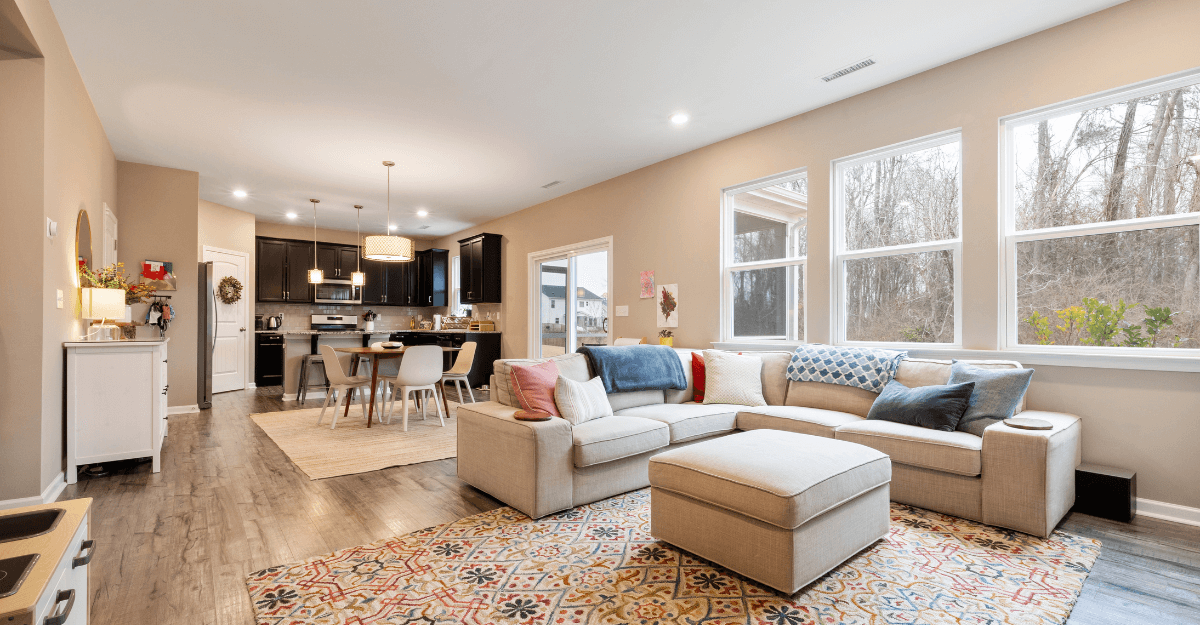Creating a space that you’ll fall in love with requires more than just a stylish look or trendy furniture—it’s about curating an environment that reflects your personality, meets your lifestyle needs, and fosters joy, relaxation, and inspiration. Whether it’s your home, office, or a small nook in your apartment, the space you occupy plays a significant role in your well-being and productivity.
This guide will walk you through the process of transforming any space into one you’ll adore. From understanding your design preferences to mastering the art of lighting, this ultimate guide will help you create a space that is functional, stylish, and truly reflective of you.
Let’s break it down into key components:
- Understanding Your Style and Needs
- Planning Your Space Layout
- Choosing the Right Color Scheme
- Selecting Furniture and Key Pieces
- Lighting: The Secret to Ambience
- Adding Personal Touches and Décor
- Maximizing Comfort and Functionality
- Sustainability and Long-Term Enjoyment
- Organizing Your Space for Longevity
1. Understanding Your Style and Needs
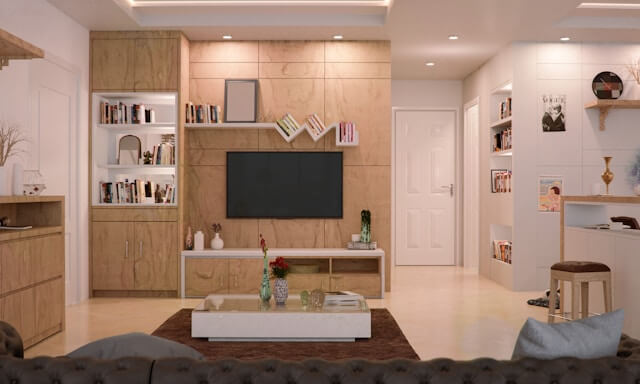
The first step in creating a space you’ll fall in love with is understanding your style. Design preferences are personal, and what works for one person might not resonate with someone else. Think of your space as an extension of who you are—what colors, textures, or furniture make you feel at home?
Identifying Your Design Style
There are several design styles you can draw inspiration from:
- Minimalist: Clean lines, simple furnishings, and neutral tones are key. Minimalism emphasizes decluttered, open spaces with functional design elements.
- Modern: This style embraces sleek furniture, polished materials like glass and metal, and often features bold accents in an otherwise neutral palette.
- Bohemian (Boho): Eclectic and vibrant, Boho spaces use rich textures, colorful patterns, and an array of plants, art, and vintage pieces.
- Industrial: Inspired by warehouses or lofts, industrial style features exposed brick, raw materials, and muted tones, with a focus on utility.
- Scandinavian: Light woods, clean lines, and neutral colors define this popular style, emphasizing functionality and minimalism with a cozy twist (known as”hygge”).
Start by collecting inspiration from websites, Pinterest boards, or interior design magazines. Look for recurring themes in what attracts you—whether it’s the color palette, the shapes, or a general “vibe” of a room.
Tailoring to Your Needs
While aesthetics are important, your space also needs to function well for your daily life. Consider your lifestyle and how you’ll use the room:
- Do you need a home office? Then storage and ergonomics should be prioritized.
- Is your living room meant for hosting gatherings? You may want comfortable seating and an open layout.
- Does the room serve multiple purposes? Think about versatile furniture like foldable desks or a sofa bed.
Understanding both your design preferences and functional needs will serve as the foundation for every other decision you make regarding your space.
2. Planning Your Space Layout
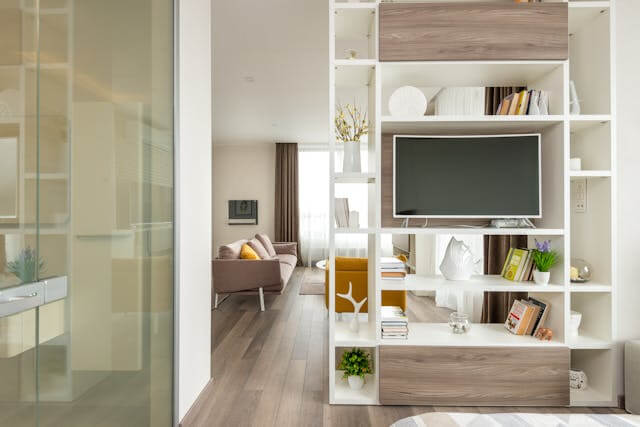
Once you have a sense of your style and needs, it’s time to plan the layout of your space. Good design starts with a strong layout, ensuring that the flow and arrangement support both function and aesthetic.
Measure Your Space
Before you start selecting furniture or decor, measure your room. A common mistake is purchasing items that are either too large or too small for the available space. Having precise measurements allows you to plan for the scale of your furnishings accurately.
Determine Key Zones
Think about how the room will be used and the “zones” you need to create within it. A living room, for example, might have several zones: a seating area for conversations, a reading nook, or a media zone for watching TV. Similarly, an open-plan space can benefit from natural divisions that create flow without the need for physical barriers.
Key questions to ask during layout planning include:
- Where will the main pieces of furniture go?
- Is there enough space to move around easily?
- How can the room support multiple activities?
- Do you have proper lighting in each zone?
Furniture Placement
Once you have a general idea of the zones, focus on furniture placement. Start with the largest pieces—typically the sofa, dining table, or bed. These “anchor” pieces dictate how the rest of the room will be arranged.
- Living Room: In a living space, the sofa should face a focal point (like a TV, fireplace, or window). Arrange chairs and additional seating to encourage conversation, ensuring there’s enough space to move between pieces.
- Bedroom: Place the bed as the focal point, ideally against the longest wall and away from doors and windows for a sense of comfort and privacy.
- Dining Room: The dining table should be easily accessible from the kitchen, with enough clearance for chairs to move in and out freely.
Traffic Flow
Ensure there’s enough space for easy movement. Avoid placing furniture in ways that block natural pathways or doorways. Designers typically recommend leaving at least 3 feet of walking space between furniture and walls, as well as 18 inches between seating and coffee tables.
Planning your layout thoughtfully ensures that your space will feel comfortable and functional, no matter the size or shape of the room.
3. Choosing the Right Color Scheme
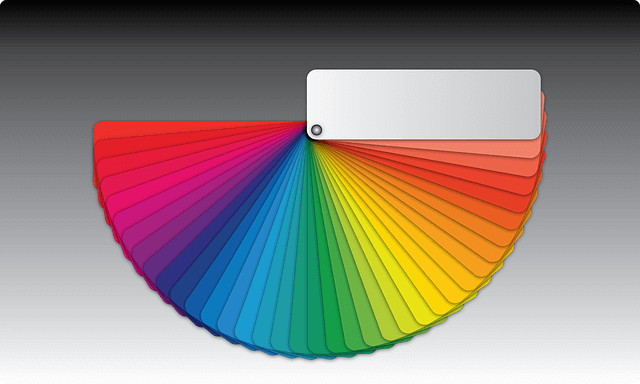
Colors have a profound impact on how we feel in a space. They can set the tone—whether you want a calm, peaceful environment or something more energizing and bold.
Understanding Color Psychology
Color psychology is the study of how different hues influence emotions. When selecting a color scheme, consider the mood you want your space to evoke:
- Cool Colors (blues, greens, purples): These shades create a calming, relaxing atmosphere, perfect for bedrooms, bathrooms, or offices.
- Warm Colors (reds, yellows, oranges): Energizing and stimulating, warm colors are great for social spaces like the living room or kitchen.
- Neutral Colors (whites, grays, beiges): Neutrals provide a versatile backdrop that can be accessorized with pops of color. They’re excellent for creating a timeless, sophisticated feel.
Creating a Cohesive Palette
The rule of three is a simple design principle that suggests using three main colors:
- Dominant color (60% of the space): This is usually a neutral or subdued shade, covering most of the walls and larger pieces of furniture.
- Secondary color (30%): Adds depth to the room and is often seen in furniture, rugs, or curtains.
- Accent color (10%): Provides the final touch of personality, usually through throw pillows, art, or other smaller decorative elements.
For example, in a Scandinavian design, the dominant color might be a soft white, the secondary a light grey or muted wood tone, and the accent color a bold mustard or forest green.
Testing Paint Samples
Before committing to a paint color, test several samples on your walls. Colors can look drastically different depending on the lighting and time of day.
Using swatches allows you to see how the color interacts with your natural light, furniture, and existing decor. Be sure to check the paint at different times—morning, afternoon, and evening—to get a comprehensive feel for its effect.
4. Selecting Furniture and Key Pieces
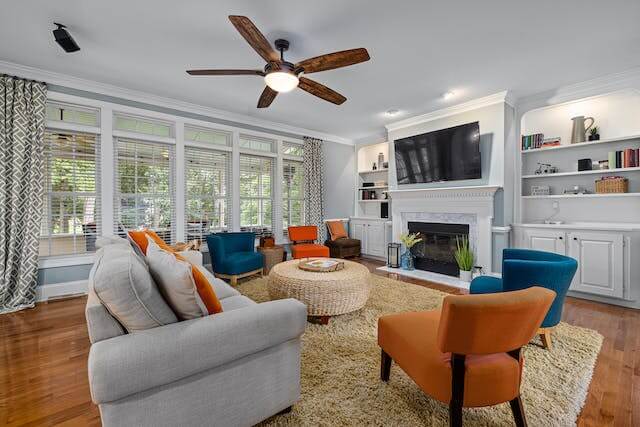
Furniture plays a central role in the overall look and function of your space. However, it’s not just about aesthetics—choosing furniture that aligns with your needs and lifestyle is essential for long-term comfort and satisfaction.
Function vs. Style
When selecting furniture, you’ll often find yourself balancing form and function. While it’s important to choose pieces you love, it’s equally important to consider their practicality.
- Sofas and Sectionals: Comfort should be your top priority, especially for seating. If you entertain frequently, consider sectionals or modular seating options. For smaller spaces, a sleek loveseat or compact couch might be a better fit.
- Beds and Mattresses: Your bed is the centerpiece of your bedroom, and investing in a high-quality mattress is key to restful sleep. Upholstered bed frames add luxury, while platform beds offer a minimalist, modern look.
- Storage Solutions: From bookshelves to dressers, functional storage pieces help keep your space tidy. Look for furniture that serves dual purposes, like a coffee table with hidden compartments or a bed with built-in drawers.
Mixing Styles
Your furniture doesn’t need to match perfectly—in fact, mixing styles can add character to a room. A vintage armchair can look stunning next to a modern sofa, or a sleek dining table can be softened by rustic wooden chairs.
To keep the look cohesive, find a common element—whether it’s the material, color, or shape—that ties the different pieces together. This eclectic approach prevents the room from feeling too staged or impersonal.
Key Pieces to Invest In
While it’s tempting to go for the cheapest option, certain pieces of furniture are worth the investment. Consider splurging on:
- A quality sofa or sectional: Since you’ll be using it daily, durability and comfort are key.
- A supportive mattress: Your health and well-being depend on it.
- Statement lighting: A beautiful chandelier or modern floor lamp can elevate the entire room.
Choosing the right furniture lays the foundation for a space that is both beautiful and functional.
5. Lighting: The Secret to Ambience
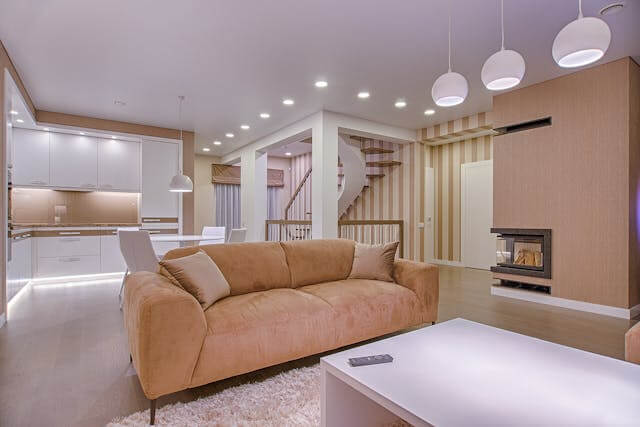
Lighting is one of the most powerful elements of design, influencing not only how your space looks but also how it feels. The right lighting can enhance mood, improve productivity, and highlight architectural features, while poor lighting can make a room feel drab and uncomfortable.
Layers of Light
A well-lit room incorporates three layers of lighting:
- Ambient lighting: This is the general, overhead light that provides overall illumination. Ceiling lights, recessed lighting, or chandeliers often serve this purpose.
- Task lighting: As the name suggests, task lighting illuminates specific areas where activities such as reading, cooking, or working take place. Examples include desk lamps, under-cabinet lights in the kitchen, and bedside reading lights.
- Accent lighting: Accent lights are used to highlight certain features, such as artwork, architectural details, or plants. They help create depth and add drama to your space, often seen in the form of wall sconces or spotlighting.
Choosing Bulbs and Light Temperature
The type of bulbs you use can significantly impact the mood of a room. Light temperature is measured in Kelvin, and choosing the right temperature helps set the tone:
- Warm light (2700K-3000K): Creates a cozy, intimate atmosphere, perfect for bedrooms and living rooms.
- Neutral white (3500K-4100K): Ideal for kitchens, bathrooms, and workspaces where clarity is essential.
- Cool white (5000K-6500K): Mimics daylight and is best suited for areas that need bright, clear lighting, such as basements or garages.
Consider adding dimmers to give you more control over the lighting in your room. This allows you to adjust the brightness based on the time of day or the activity at hand.
6. Adding Personal Touches and Décor
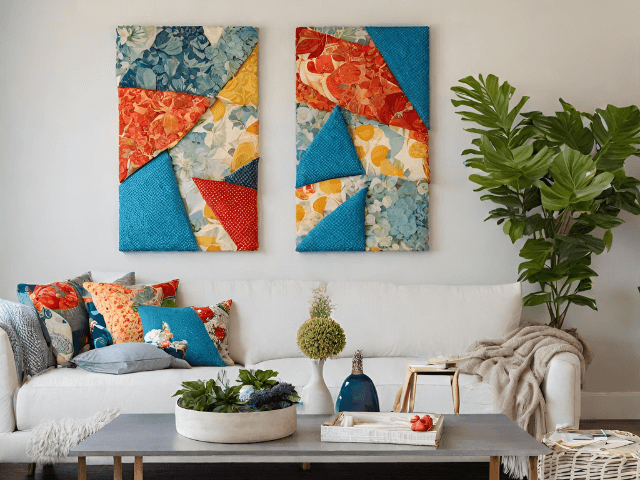
No space feels complete until it reflects you. Personal touches bring warmth, uniqueness, and character to your room, transforming it from just a beautifully decorated space into one that feels like home.
Personalizing with Décor
Décor is where your personality shines, allowing you to add meaningful details and finishing touches that make your space uniquely yours. The key here is to find pieces that resonate with you—whether it’s art, textiles, or sentimental objects.
Here are some ideas to infuse your personal style:
- Artwork: Choose artwork that reflects your taste and tells a story. You don’t need expensive pieces—local artists, photographs, or even DIY art can work wonders. A well-placed gallery wall or a large statement piece above the sofa can become the focal point of a room.
- Textiles: Rugs, throw blankets, and pillows offer an easy way to layer texture and warmth. Experiment with bold patterns, soft fabrics, or cultural textiles that speak to your heritage or travel memories. These items can be swapped out seasonally to refresh the room’s look.
- Plants: Houseplants breathe life into any room and create a calming, natural atmosphere. Consider different varieties, such as low-maintenance succulents or leafy statement plants like the fiddle-leaf fig. Group plants together for a lush effect or place them individually in corners to brighten up empty spaces.
- Sentimental Items: Display items that have personal significance—whether it’s family photos, souvenirs from travels, or heirlooms passed down through generations. These objects add layers of meaning to your space and make it feel truly yours.
- Books and Collectibles: Bookshelves can act as both storage and a decorative feature. Organize your books by color, height, or genre for an aesthetic touch, and add in a few decorative objects like candles, vases, or sculptures for variety.
The Importance of Balance
When adding personal touches, it’s easy to get carried away with too many accessories. Aim for a balance between minimalism and expression—too many items can make a space feel cluttered, while too few may feel sterile. Consider rotating décor items periodically to keep the space feeling fresh.
7. Maximizing Comfort and Functionality
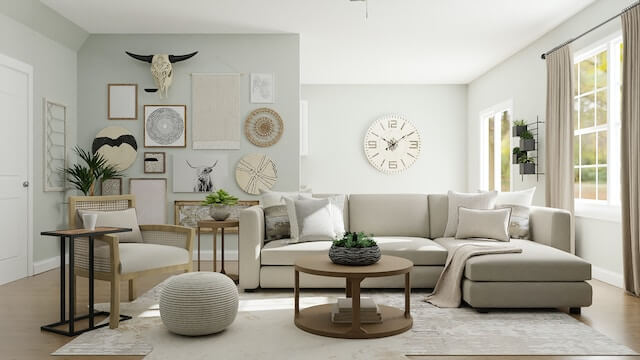
While aesthetics play a vital role, the ultimate goal is to create a space that is comfortable and functional for your daily needs. A beautiful room is only valuable if it also supports your lifestyle.
Creating Comfort Zones
Your space should cater to relaxation and comfort. Start by considering the areas where you spend the most time. Here are a few tips to enhance comfort in key areas:
- Living Room: Plush, oversized pillows, soft throws, and a comfy couch are essential for creating a living room you’ll want to sink into after a long day. Consider layering rugs for a cozy feel and use curtains that allow you to control natural light.
- Bedroom: Prioritize your bed. Invest in high-quality bedding—crisp cotton sheets or luxurious linen—and layer them with soft blankets and decorative pillows. Create a serene atmosphere with soothing colors, bedside lamps for softer lighting, and perhaps a diffuser to introduce calming scents like lavender.
- Home Office: Ensure that your workspace is ergonomic. Invest in a comfortable chair, adjust the desk height if necessary, and make sure your lighting reduces eye strain. Keeping your office organized with functional storage solutions will also help improve focus and productivity.
Versatility in Furniture
Maximizing functionality means choosing furniture that serves multiple purposes. For smaller spaces, this might mean opting for a sleeper sofa, fold-out dining tables, or nesting side tables. Multi-functional furniture allows you to make the most of your space without compromising on style.
- Storage Solutions: In every room, consider where additional storage might be needed. In the kitchen, add hanging racks for utensils or extra shelves. In the bedroom, ottomans with hidden compartments or under-the-bed storage boxes are lifesavers.
By thinking practically about both comfort and functionality, you’ll create a space that doesn’t just look beautiful, but one you can enjoy living in every day.
8. Sustainability and Long-Term Enjoyment
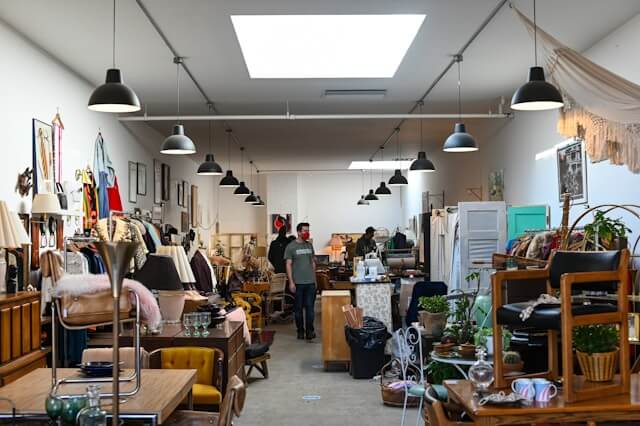
As you design a space you’ll fall in love with, it’s important to consider how sustainable and long-lasting your choices are. A room designed with sustainability in mind will not only be better for the environment but will also bring long-term satisfaction and adaptability.
Choose Sustainable Materials
Opt for furniture and decor made from eco-friendly, sustainable materials whenever possible. Sustainable options include:
- Wood from responsible sources: Look for furniture certified by the Forest Stewardship Council(FSC) to ensure it’s made from responsibly sourced wood.
- Reclaimed or recycled materials: Pieces made from repurposed wood, metal, or glass are both eco-friendly and stylish.
- Natural fibers: Choose organic cotton, wool, jute, or linen for textiles and rugs. These materials are biodegradable and often have a longer lifespan than synthetic fibers.
By opting for eco-friendly materials, you can create a space that has a lower environmental impact without sacrificing beauty or quality.
Invest in Quality, Not Quantity
Rather than purchasing trendy or cheap items that may wear out quickly, focus on investing in high-quality, timeless pieces that will last. A well-made sofa, a sturdy dining table, or a quality mattress are worth spending more on because they’re likely to endure years of use.
Over time, you can gradually add to your space by investing in key pieces. Avoid the temptation to furnish your room all at once with inexpensive items that might not stand the test of time.
Repurposing and Upcycling
Before discarding old furniture or decor, consider whether it can be repurposed or upcycled. A fresh coat of paint, new upholstery, or a simple hardware swap can completely transform an old piece, saving you money and reducing waste.
- DIY Projects: Get creative with DIY projects that allow you to personalize and refresh your existing items. Reupholster a chair, paint an old dresser, or create your own artwork for the walls. These projects add a unique touch to your space while promoting sustainability.
Mindful Consumption
Consider the environmental and ethical impact of your choices. Supporting local artisans, purchasing fair-trade goods, or choosing items from companies that prioritize sustainability can ensure that your space reflects your values. Small, thoughtful decisions in design can contribute to a larger positive impact on the planet.
By prioritizing sustainability, you’ll not only enjoy a space that is healthier for the environment but also one that evolves gracefully with your life.
9. Organizing Your Space for Longevity
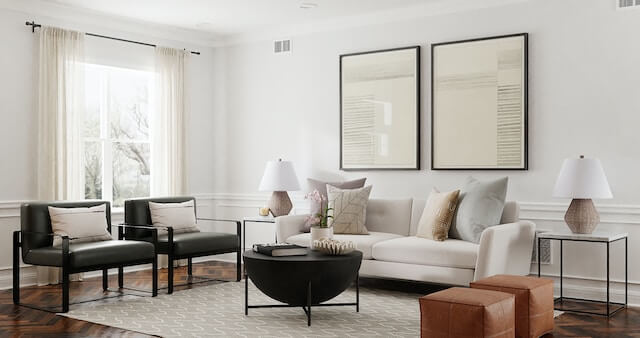
One of the most important aspects of maintaining a space you love is keeping it organized. A clutter-free environment allows you to appreciate your design and makes daily life more enjoyable. Organization isn’t just about aesthetics—it also impacts your mental clarity and peace of mind.
Declutter Regularly
Start by removing items that no longer serve a purpose or bring you joy. Every few months, go through your belongings to decide what can be donated, recycled, or thrown away.
A minimalist approach helps prevent overcrowding in your space, allowing the design to stand out without being overshadowed by too many possessions.
Smart Storage Solutions
When organizing your space, storage is key. Invest in storage solutions that are both practical and stylish. Here are a few ideas:
- Open shelving: Perfect for displaying beautiful items like books, plants, or ceramics. Keep in mind that open shelves require careful styling to avoid looking cluttered.
- Hidden storage: Opt for furniture with hidden compartments or built-in storage. For example, ottomans that double as storage boxes, or beds with drawers underneath, can keep everyday clutter out of sight.
- Organizers and bins: Use baskets, bins, and drawer organizers to keep everything in its place. Labeling storage containers can make it easy to locate items and maintain a clean space.
Make Tidying a Habit
Once your space is organized, make tidying a regular habit. Dedicate a few minutes each day to putting things back where they belong. Small daily habits prevent clutter from building up over time and make deep cleaning less overwhelming.
- Daily practices: Create systems for commonly used areas, like a tray for your keys and mail by the entrance, or a designated drawer for TV remotes. By giving everything a home, you’ll find it easier to maintain an organized and peaceful environment.
Digital Decluttering
Don’t forget to declutter your digital space! Whether it’s organizing cables and charging stations or tidying up your home office’s digital files, an organized digital environment contributes to overall productivity and calm.
By creating organizational systems that work for you, you’ll be able to enjoy your beautifully designed space for years to come, without the stress of clutter.
Conclusion
Creating a space you’ll fall in love with is a process that combines self-expression, functionality, and thoughtful design. Whether you’re working with a small studio apartment or a spacious home, the principles remain the same: identify your style, prioritize comfort and functionality, and inject personality through personal touches and décor.
By following the steps in this guide—planning your layout, choosing the right colors, investing in key pieces, maximizing light, and keeping your space organized—you can transform any room into a place that not only looks beautiful but also brings you joy every time you walk through the door.
When you love your space, you’ll find that it becomes more than just a place to live or work—it becomes a true sanctuary, offering comfort, inspiration, and peace.

